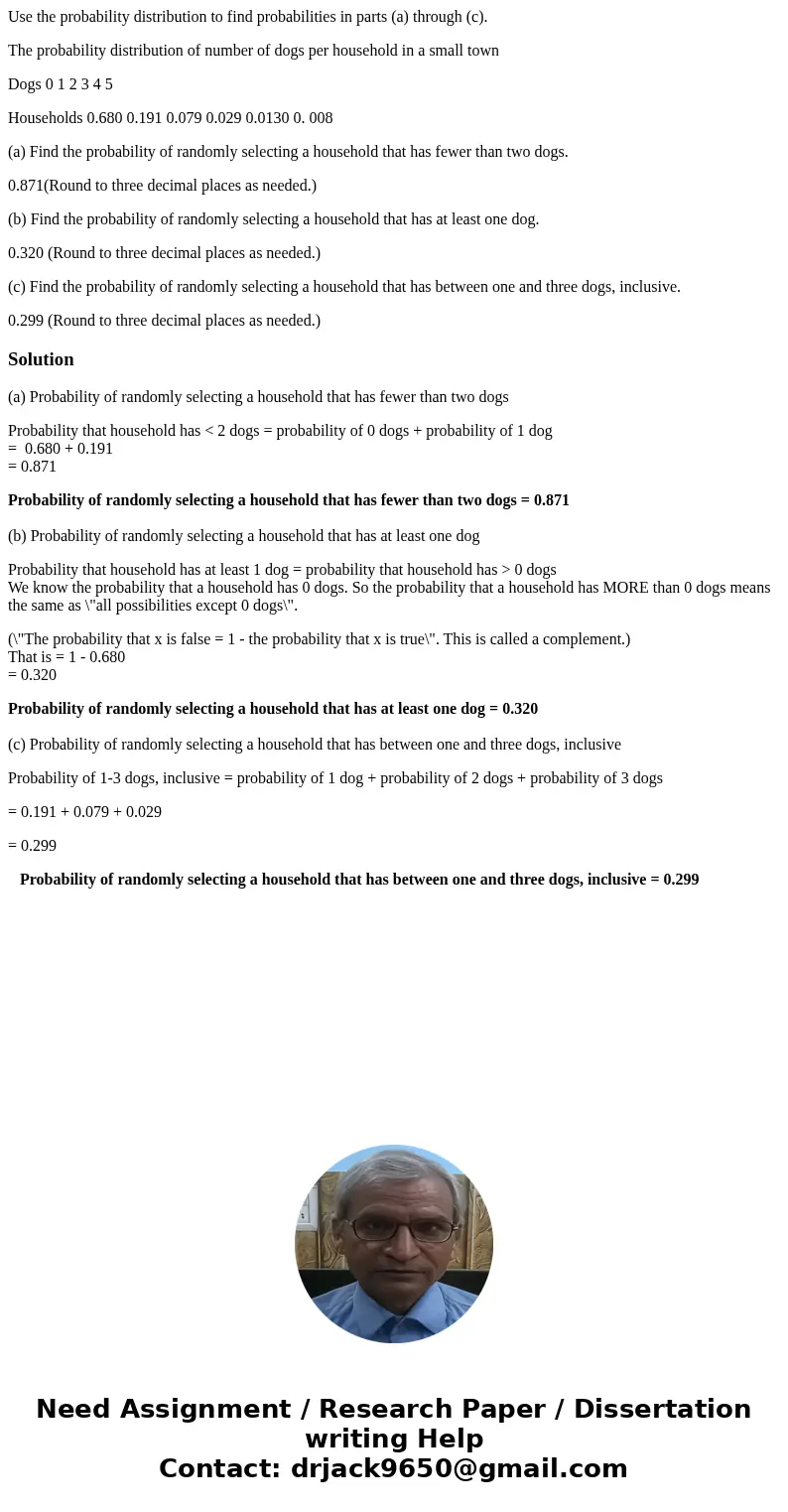Use the probability distribution to find probabilities in pa
Use the probability distribution to find probabilities in parts (a) through (c).
The probability distribution of number of dogs per household in a small town
Dogs 0 1 2 3 4 5
Households 0.680 0.191 0.079 0.029 0.0130 0. 008
(a) Find the probability of randomly selecting a household that has fewer than two dogs.
0.871(Round to three decimal places as needed.)
(b) Find the probability of randomly selecting a household that has at least one dog.
0.320 (Round to three decimal places as needed.)
(c) Find the probability of randomly selecting a household that has between one and three dogs, inclusive.
0.299 (Round to three decimal places as needed.)
Solution
(a) Probability of randomly selecting a household that has fewer than two dogs
Probability that household has < 2 dogs = probability of 0 dogs + probability of 1 dog
= 0.680 + 0.191
= 0.871
Probability of randomly selecting a household that has fewer than two dogs = 0.871
(b) Probability of randomly selecting a household that has at least one dog
Probability that household has at least 1 dog = probability that household has > 0 dogs
We know the probability that a household has 0 dogs. So the probability that a household has MORE than 0 dogs means the same as \"all possibilities except 0 dogs\".
(\"The probability that x is false = 1 - the probability that x is true\". This is called a complement.)
That is = 1 - 0.680
= 0.320
Probability of randomly selecting a household that has at least one dog = 0.320
(c) Probability of randomly selecting a household that has between one and three dogs, inclusive
Probability of 1-3 dogs, inclusive = probability of 1 dog + probability of 2 dogs + probability of 3 dogs
= 0.191 + 0.079 + 0.029
= 0.299
Probability of randomly selecting a household that has between one and three dogs, inclusive = 0.299

 Homework Sourse
Homework Sourse